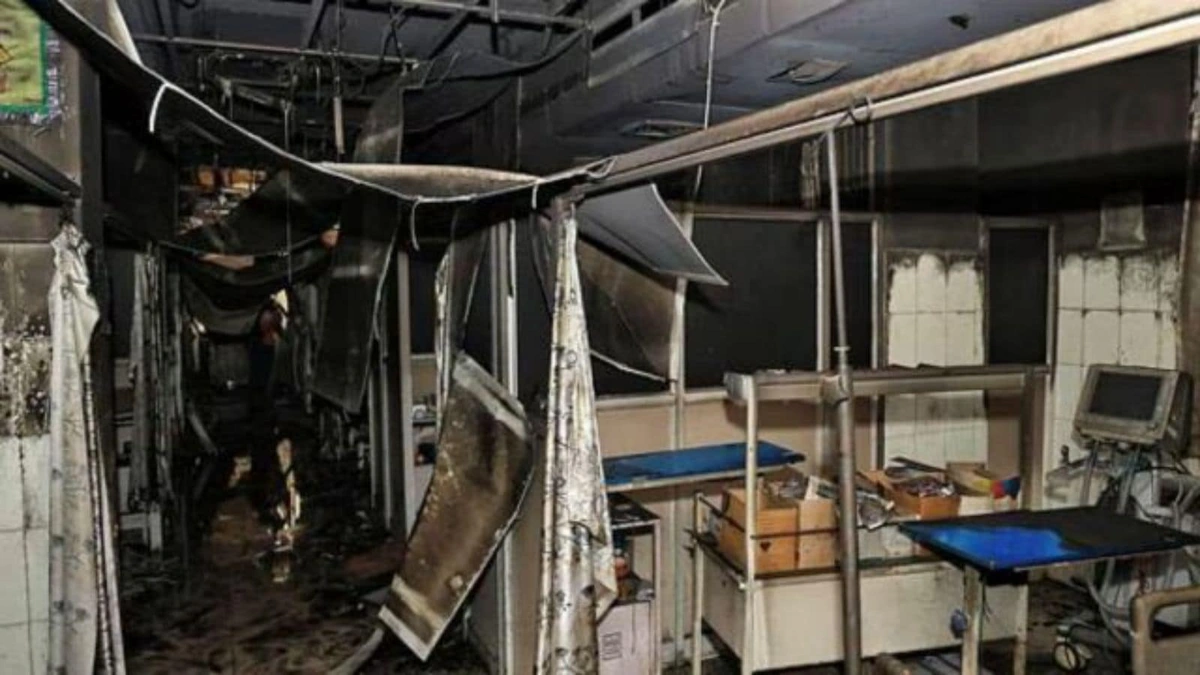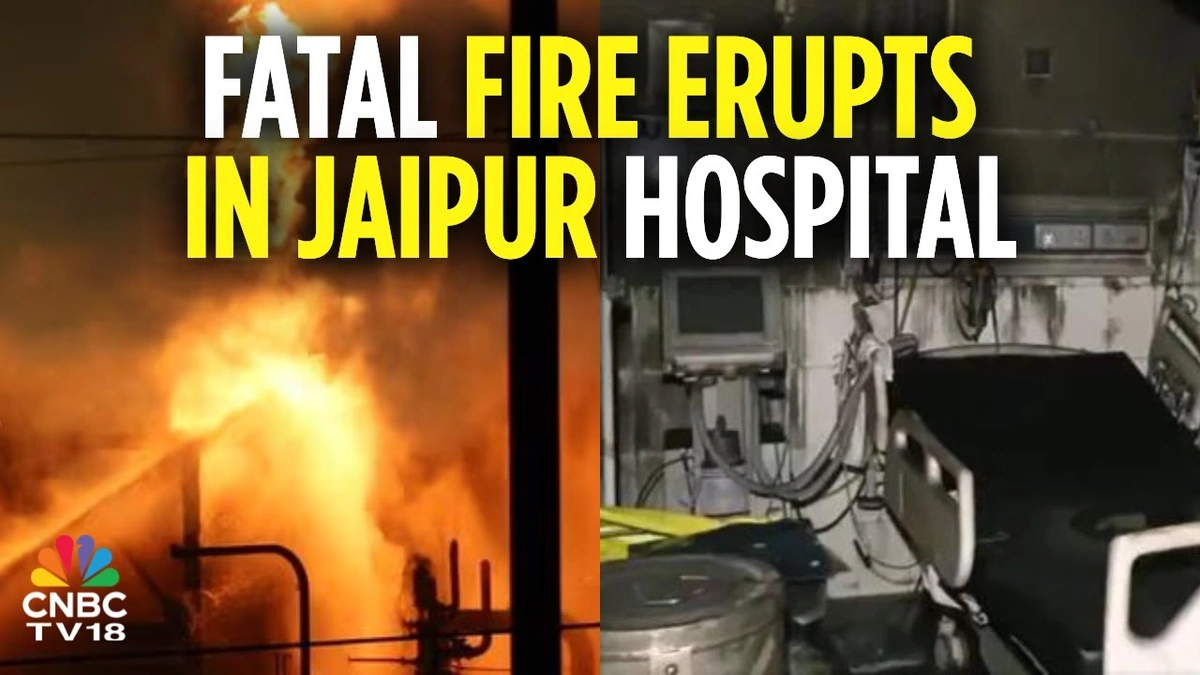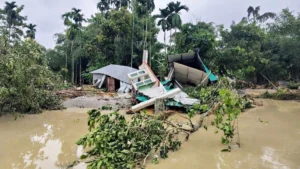Deadly Fire at Jaipur Hospital Claims at Least Six Lives
The news hit like a punch to the gut: a deadly fire ripped through a hospital in Jaipur, claiming the lives of at least six people. It’s the kind of event that makes you stop and think – not just about the immediate tragedy, but about the why behind it. What systemic failures led to this? What can we learn to prevent it from happening again? That’s the burning question we need to address.
The Unseen Dangers | A Deeper Look at Hospital Fire Safety

Here’s the thing: hospital fires aren’t exactly rare, unfortunately. But they should be. These are places where people go to heal, to be cared for, to feel safe. So, when a fire breaks out, it’s a profound betrayal of that trust. What fascinates me is the complex web of factors that contribute to these disasters. It’s rarely just one thing; it’s usually a combination of faulty wiring, inadequate fire safety measures, lack of staff training, and sometimes, sheer negligence. The incident is under investigation and details are still emerging, so we will have to wait for the official report.
Let’s be honest, a big part of the problem is often the age and infrastructure of many hospitals, especially in rapidly growing cities like Jaipur. Buildings may not be up to current fire safety codes, or renovations might have been done without proper oversight. And when you add in the constant influx of patients, the heavy use of electrical equipment, and the presence of flammable materials like oxygen tanks and sanitizers, you’ve got a recipe for disaster. We also have to consider the role of evacuation procedures ; are they well-defined? Are staff adequately trained to execute them swiftly and efficiently, especially when dealing with patients who may be immobile or disoriented? A failure in this area can quickly turn a manageable situation into a catastrophe. This is exactly why we have to ask questions such as: Are the hospitals up to code? And, are the employees well-trained?
Root Causes of Hospital Fires
So, what are some of the underlying reasons that can be attributed to hospital fires in India ?
- Compromised safety procedures
- Negligence in handling equipment.
- Inadequate infrastructure.
The Human Cost | Beyond the Statistics
It’s easy to get lost in the technical details, but we can’t forget the human cost. Six lives lost – those aren’t just numbers; they’re people with families, with stories, with futures that have been tragically cut short. And beyond the fatalities, there are the injured, the traumatized, the families left to pick up the pieces. It’s a ripple effect of pain and suffering that extends far beyond the walls of that hospital.
What fascinates me is the psychological impact on both patients and staff. Imagine being a patient, already vulnerable and scared, and then suddenly having to face the terror of a fire. It’s a deeply traumatic experience that can leave lasting scars. And for the doctors, nurses, and other healthcare workers who are on the front lines, trying to save lives amidst the chaos – the emotional toll can be immense. There are reports that the Jaipur hospital was not properly equipped to handle an emergency situation such as this.
Preventing Future Tragedies | A Call to Action
Okay, so we’ve talked about the problem – now what? What can be done to prevent these tragedies from happening again? Here’s where it gets tricky, because there’s no single, easy solution. It requires a multi-pronged approach that involves government, hospital administrators, staff, and even patients.
For starters, there needs to be stricter enforcement of fire safety codes and regulations. Regular inspections, unannounced drills, and hefty penalties for non-compliance. No excuses. But it’s not just about ticking boxes; it’s about creating a culture of safety, where everyone is aware of the risks and takes responsibility for preventing fires. Hospitals need to invest in modern fire detection and suppression systems, like sprinklers and smoke alarms, and ensure they are properly maintained. And staff need to be trained regularly on fire safety procedures, including evacuation protocols and the use of fire extinguishers. A common mistake I see is that they do not take these procedures seriously.
However, we need to go beyond the technical aspects and address the human factors. Hospitals should prioritize staff well-being, providing them with adequate rest and support to reduce the risk of burnout and errors. And patients and their families should be educated about fire safety procedures and encouraged to report any potential hazards they observe. It’s about creating a partnership, where everyone is working together to ensure a safe environment. Let me rephrase that for clarity: we all need to be a part of the solution. We also need to consider that the hospital emergency response will be effective in case of a fire or any other calamity.
According to fire safety, early detection and suppression are crucial.
The Role of Government and Regulatory Bodies
Ultimately, the government and regulatory bodies play a crucial role in overseeing and enforcing fire safety standards in hospitals. This includes:
- Developing and updating fire safety codes and regulations.
- Conducting regular inspections and audits of hospitals.
- Providing funding and support for fire safety training and equipment.
- Investigating fire incidents and holding those responsible accountable.
And, these are the fire safety regulations that are to be followed by hospitals.
The Future of Hospital Safety in India
The Jaipur hospital fire serves as a stark reminder of the urgent need to prioritize fire safety in healthcare facilities across India. It’s not enough to simply react after a tragedy occurs; we must proactively identify and address the systemic issues that contribute to these incidents.
This requires a collaborative effort involving government, hospital administrators, healthcare professionals, and the community at large. By investing in infrastructure, training, and a culture of safety, we can create a healthcare system that is not only focused on healing, but also on protecting the lives of those within its walls. Let’s not let the lives lost in Jaipur be in vain. Let it be a turning point, a catalyst for change, a renewed commitment to ensuring the safety and well-being of every patient and healthcare worker in India. With the hospital infrastructure and stringent regulations, the fire can be avoided. We also need to focus on fire safety training . Moreover, the fire suppression systems need to be updated. The hospital management should invest in training the staff for fire emergencies.
FAQ Section
Frequently Asked Questions
What are the most common causes of hospital fires?
Electrical malfunctions, cooking equipment, and smoking are frequent culprits.
How can I, as a patient or visitor, contribute to fire safety in a hospital?
Be aware of your surroundings, follow safety guidelines, and report any potential hazards to staff.
What should I do if I discover a fire in a hospital?
Activate the nearest fire alarm, evacuate the area if possible, and call for help.
Are there specific fire safety regulations that hospitals in India must adhere to?
Yes, hospitals must comply with national and state fire safety codes, which include requirements for fire detection, suppression, and evacuation plans.
What kind of fire safety equipment should be available in a hospital?
Hospitals should be equipped with fire extinguishers, sprinkler systems, smoke detectors, and clearly marked evacuation routes.
How often should fire drills be conducted in hospitals?
Fire drills should be conducted regularly, at least twice a year, to ensure that staff and patients are familiar with evacuation procedures.













